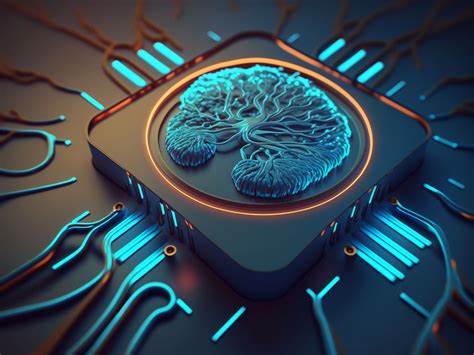A groundbreaking development in computing technology has emerged from Switzerland-based startup FinalSpark, which claims to have created a unique computer processor composed of 16 mini brains made from human brain tissue. This innovative “living computer,” known as the Neuroplatform, offers a compelling alternative to traditional silicon-based computing systems. Researchers develop Biocomputer by linking 16 Brain-like structures grown from human cells. Researchers can now remotely access this biocomputer to conduct studies, particularly in fields like artificial intelligence (AI) that demand substantial computational resources.
FinalSpark’s scientist and strategic advisor, Ewelina Kurtys, highlights one of the major advantages of biological computing: energy efficiency. “One of the biggest advantages of biological computing is that neurons compute information with much less energy than digital computers,” Kurtys explained in a company blog post. “It is estimated that living neurons can use over 1 million times less energy than the current digital processors we use. ” This significant reduction in energy consumption presents a promising solution for the growing environmental concerns associated with conventional computing.

The Potential of Biological Computing in AI and Environmental Sustainability
The core of FinalSpark’s technology involves brain organoids, which are small samples of human brain tissue derived from neural stem cells. These organoids are maintained in a specialized environment to keep them alive. By connecting these mini brains to specialized electrodes, the startup can perform computer processing and convert neural activity into digital information. This approach leverages the natural computational abilities of neurons, offering a potential leap forward in AI model generalization and performance.
The concept of living computers isn’t entirely new. Last year, for example, scientists connected neurons to electrical circuits to create a device capable of voice recognition. However, FinalSpark’s biocomputer stands out due to its potential to significantly reduce the carbon footprint associated with digital computing. “Apart from possible improvements in AI model generalization, we could also reduce greenhouse emissions without sacrificing technological progress.”
FinalSpark envisions its Neuroplatform as a pivotal tool in advancing biocomputer research. They aim to encourage other institutions to utilize this innovative platform, thereby fostering further developments in this nascent field. The startup’s approach comes at a time when AI companies are increasingly seeking resources for data centers, amidst rising concerns over carbon emissions and water usage. By offering a more sustainable computing solution, FinalSpark’s biocomputer could play a crucial role in mitigating the environmental impact of AI development.
FinalSpark’s creation of a biocomputer by linking 16 brain-like structures grown from human cells represents a significant technological advancement. This living computer not only promises enhanced efficiency in AI computations but also offers a pathway to more environmentally sustainable computing practices. As the demand for computing power continues to rise, innovations like the Neuroplatform may prove to be vital in balancing technological progress with environmental stewardship.
For further Information, visit: https://futurism.com/neoscope/computer-human-brain-cells-perform-voice-recognition
Read our previous articles: First 5G-enabled Surgery performed by Doctor
Hitchhiking Aliens: New Research into Panspermia (scitechupdate.com)
What Is Inside the Moon? (scitechupdate.com)
Two new COVID variants, called ‘FLiRT’ in the United States
Sex and Gender Studies: Unlocking Equality and Social Justice
https://scitechupdate.com/index.php/scientists-say-this-blood-type-increases-risk-of-early-stroke/
https://scitechupdate.com/index.php/the-harmful-impact-of-the-r-word-why-it-needs-to-be-retired/
https://scitechupdate.com/index.php/israel-advances-cancer-treatment-with-genomic-profiling/https://scitechupdate.com/index.php/stomach-cancer-causes-signs-and-treatment/


Pingback: Future of Space Exploration: NASA's Innovative Technologies
Pingback: Researchers have revealed what is inside the Moon
Pingback: China Visit: Tourists Should Avoid These 12 Things
Pingback: Scientists find a moon cave for astronauts and believe others exist
Pingback: NASA unveils two new white papers on Moon to Mars architecture
You did an excellent job of producing an intricate, beautiful, and well-written piece of work. The presentation is aesthetically pleasing, and the written composition is sophisticated. However, it appears that you are concerned about the possibility of presenting something that is deemed to be suspicious. Yes, I anticipate that you will be able to address this problem immediately.
Pingback: Researchers find that the rate of global warming may soon decelerate - Explore the Future of Innovation with Us
Pingback: How Long Does COVID-19 Remain in Your Body?
Pingback: Physicist Suggests Gravity Can Exist Without Mass
Pingback: Scientists Found 50000 year old Viruses in Neanderthal DNA